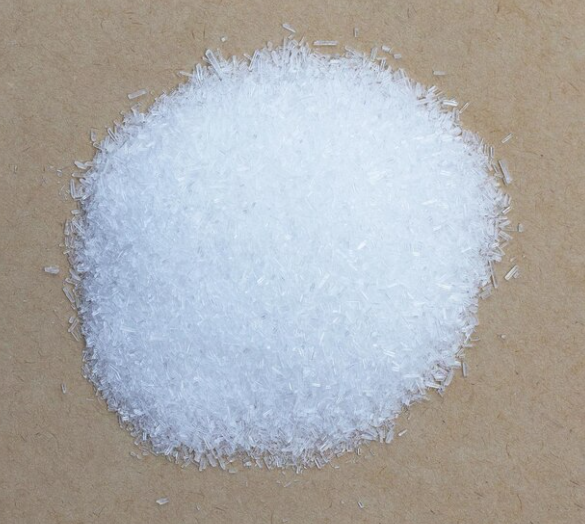IUPAC Name
Benzoic acid
Cas Number
65-85-0
HS Code
2916.31.00
Formula
C6H5COOH
Appearance
White Flakes
Common Names
E210
Packaging
25 Kg Bag
Brief Overview
Benzoic acid, C7H6O2 (or C6H5COOH), is a colorless crystalline solid and a simple aromatic carboxylic acid. The name is derived from gum benzoin, which was, for a long period, the only source of benzoic acid. Its salts are used as food preservatives, and benzoic acid is an important precursor for synthesizing many other organic substances.
Manufacturing Process
Benzoic acid is produced commercially by the partial oxidation of toluene with oxygen. The process is catalyzed by cobalt or manganese naphthenates. The process uses cheap raw materials and proceeds with a high yield. It can be synthesized through various methods: in the laboratory, by hydrolysis, from benzaldehyde, from bromobenzene, from benzyl chloride, and from benzyl alcohol.
1. Laboratory Synthesis
Benzoic acid is cheap and readily available, so the laboratory synthesis of benzoic acid is mainly practiced for its pedagogical value. It is a common undergraduate preparation. Benzoic acid can be purified by recrystallization from water because of its high solubility in hot water and poor solubility in cold water. The avoidance of organic solvents for the recrystallization makes this experiment particularly safe.
2. By Hydrolysis
Like other nitriles and amides, benzonitrile and benzamide can be hydrolyzed to benzoic acid or its conjugate base in acid or base conditions.
3. From Benzaldehyde
The base-induced disproportionation of benzaldehyde, the Cannizzaro reaction, affords equal amounts of benzoate and benzyl alcohol, the latter can be removed by distillation.
4. From Bromobenzene
Bromobenzene can be converted to benzoic acid by "carbonation" of the intermediate phenylmagnesium bromide. This synthesis offers a convenient exercise for students to carry out a Grignard reaction, an important class of carbon-carbon bond-forming reaction in organic chemistry.
5. From Benzyl Alcohol
Benzyl alcohol is refluxed with potassium permanganate or other oxidizing reagents in water. The mixture is hot-filtered to remove manganese dioxide and cooled to afford benzoic acid.
6. From Benzyl Chloride
Benzoic acid can be prepared by oxidation of benzyl chloride in the presence of alkaline KMnO4
Food Industry
Benzoic acid and its salts are used as food preservatives. Benzoic acid inhibits the growth of mold, yeast, and some bacteria. It is either directly added or created from its sodium, potassium, or calcium salt reactions. The efficacy of benzoic acid and benzoate depends on the food's pH. Acidic food and beverages like fruit juice (citric acid), sparkling drinks (carbon dioxide), soft drinks (phosphoric acid), pickles (vinegar), or other acidified food are preserved with benzoic acid and benzoates.
Pharmaceutical Industry
Benzoic acid is used as an anti-microbial and anti-fungal agent to preserve drugs and as an intermediate reactive agent to prepare medicines. It is combined with alcohol and water to be used as a cleaning agent in pharmacies.
